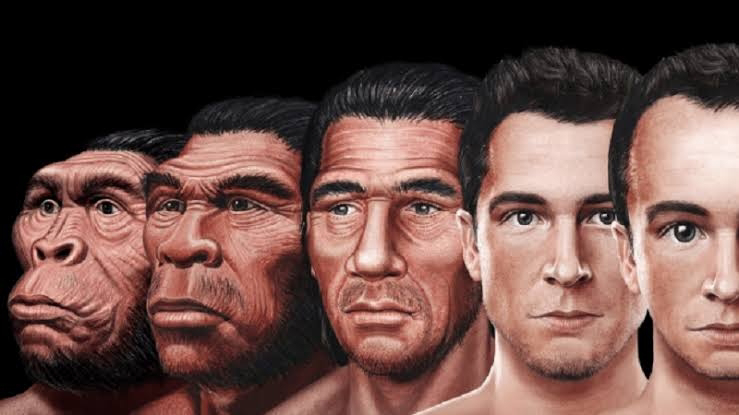Chapter 8: Genetics and Evolution – The Role of Genetic Changes in Evolution
Chapter 8: Genetics and Evolution – The Role of Genetic Changes in Evolution
The theory of evolution does not solely rely on external factors such as fossil records, morphological similarities, and natural selection. It is also closely linked to changes in the genetic structures of living organisms. Genetics forms the cornerstone of evolutionary changes, and even before Darwin's theory of natural selection, the foundations of genetic science were laid in the late 19th century. However, to understand how genetic science integrates with the theory of evolution, it is essential to know how these two fields complement each other.
Genetics: The Cornerstone of Evolutionary Changes
Genetics is the branch of science that studies the hereditary units carrying biological traits in living organisms. An organism's genetic structure determines its traits. Genetic material is encoded in DNA and RNA molecules, and this genetic information is passed on from generation to generation. At the heart of evolutionary changes lies the way this genetic material changes over time.
There are three main mechanisms that drive genetic changes:
1. Mutations: Mutations are random changes in genetic material. These changes can occur due to environmental factors, faulty DNA replication, or other influences. Most mutations are neutral and do not affect the organism's survival chances. However, some mutations can be beneficial and help the organism better adapt to its environment. Other mutations may be harmful and reduce the organism's chances of survival.
2. Genetic Drift: Genetic drift is the change in genetic diversity due to random events in small populations. Genetic drift operates independently of environmental factors such as natural selection. In this process, some genetic variations may randomly disappear, or new variations may be added to the population.
3. Gene Flow: Gene flow refers to the transfer of genetic material from one population to another. Movement between different populations can lead to the creation of new genetic diversity, contributing to evolutionary changes. For example, when a group of animals migrates from one area to another, it can result in the merging of different genetic traits.
Natural Selection and Genetics: The Evolutionary Process Together
Natural selection is a powerful mechanism that shows how genetic changes affect an organism's survival and reproduction. An organism's chances of survival depend on its genetic traits. Some traits allow an organism to adapt better to its environment, increasing its chances of survival and reproduction.
Natural selection determines genetic variations. For example, individuals of a species may have certain traits that help them better adapt to environmental conditions. These traits enable the individual to survive longer and reproduce more successfully, so the genetic variation is passed down to future generations. This process leads to long-term evolutionary changes.
The Contribution of Genetic Changes to Evolution
Genetic changes form the foundation of evolutionary processes. The genetic changes occurring in every individual accumulate across the population, leading to evolutionary changes. Evolution concerns how genetic material changes over time and how new traits emerge.
Genetic diversity enhances a population's ability to adapt. This diversity helps species respond to environmental changes. For example, environmental factors such as climate change or the emergence of new predators can force organisms to change their survival strategies. Genetic diversity allows individuals with traits that provide resistance to these environmental changes to survive.
Evolution and Human Genetics
Humans, too, are subject to evolutionary processes, and genetic changes are fundamental mechanisms of human evolution. The genetic makeup of humans is the product of millions of years of evolutionary processes. Human genetics, especially since the emergence of Homo sapiens, has evolved in response to environmental factors and biological changes.
For example, differences in skin color observed in various parts of the human body are linked to human evolutionary history. Variation in skin color emerges as a genetic change, demonstrating how humans have adapted to environmental conditions in different geographic regions. In areas with intense sunlight, darker skin color could be an evolutionary adaptation to better protect against UV radiation.
Evolutionary Psychology and Genetics
It is important to note that genetic changes can affect not only physical traits but also behavioral characteristics. Evolutionary psychology studies the evolutionary origins of human psychology and examines the role of genetic changes in this process. How humans behave in societies, organize in groups, and cooperate can be explained from an evolutionary perspective.
Evolutionary psychology explores how genetic traits are associated with behavioral strategies that increase survival and reproductive success. In this context, some behavioral tendencies may be evolutionarily beneficial. For instance, behaviors such as empathy and social bonding could provide evolutionary advantages by improving survival and reproductive success within groups.
Conclusion
Genetic changes are one of the fundamental dynamics of evolution and help us understand how organisms adapt to their environments. Evolution involves changes in genetic material over time, and this process operates through mechanisms like natural selection, mutations, genetic drift, and gene flow. All living organisms, including humans, are part of this evolutionary process, and genetic changes play a decisive role in survival, reproduction, and adaptation to environmental changes.








Comments